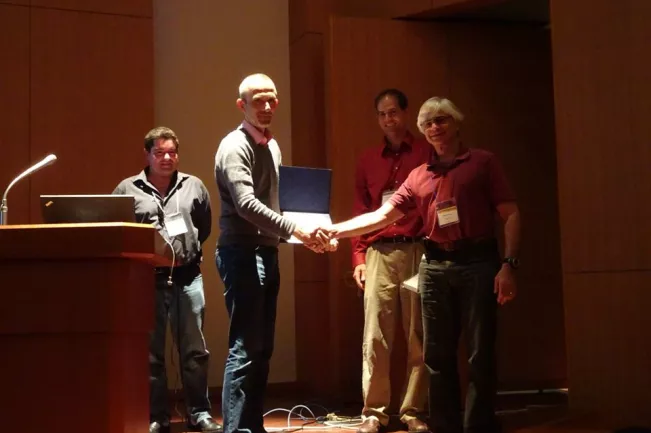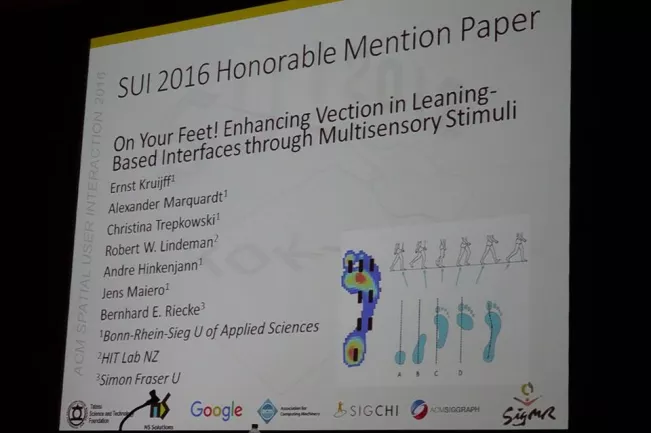Department of Computer Science
Honorable mention paper award in Tokyo

A team of authors around Ernst Kruijff has won the Honorable Mention Paper Award for their work titled “On Your Feet! Enhancing Vection in Leaning-Based Interfaces through Multisensory Stimuli“. The team included H-BRS researchers Alexander Marquardt, Christina Trepkowski, Andre Hinkenjann and Jens Maiero as well as Bernhard Riecke from Simon Frazer University, Canada and Robert Lindeman (HIT Lab, University of Canterbury, New Zealand). Ernst presented their contribution at this year’s ACM Symposium on Spatial User Interaction (SUI 2016) held in Tokyo, Japan.

Abstract
When navigating larger virtual environments and computer games, natural walking is often unfeasible. Here, we investigate how alternatives such as joystick- or leaning-based locomotion interfaces (“human joystick”) can be enhanced by adding walking-related cues following a sensory substitution approach. Using a custom-designed foot haptics system and evaluating it in a multi-part study, we show that adding walking related auditory cues (footstep sounds), visual cues (simulating bobbing head-motions from walking), and vibrotactile cues (via vibrotactile transducers and bass-shakers under participants’ feet) could all enhance participants’ sensation of self-motion (vection) and involvement/presence. These benefits occurred similarly for seated joystick and standing leaning locomotion. Footstep sounds and vibrotactile cues also enhanced participants’ self-reported ability to judge self-motion velocities and distances traveled. Compared to seated joystick control, standing leaning enhanced self-motion sensations. Combining standing leaning with a minimal walking in-place procedure showed no benefits and reduced usability, though. Together, results highlight the potential of incorporating walking-related auditory, visual, and vibrotactile cues for improving user experience and self-motion perception in applications such as virtual reality, gaming, and tele-presence.
Links
Weiterführende Links